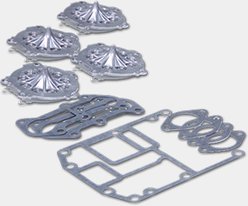Stephen Neil spent two summers fishing and guiding in Elfin Cove, Alaska. During that time, he filleted hundreds of pounds of fish for clients daily. He became quite proficient and still thoroughly enjoys it today. Back home, living in the suburbs of Franklin, Tennessee, Neil often brings home fish for the frying pan. In this series of blogs, he outlines the steps in the process of filleting and preparing fish for cooking or storage. Click the links to learn more about How to Fillet Fish with a Fixed-Blade Knife, How to Fillet Fish with an Electric Knife, and Filleting Fish with a Fixed-Blade Knife vs. an Electric Knife.
Keeping and eating fish is one of the best parts about the outdoors for many people. However, if you’re going to keep fish and aren’t cooking it right away, it’s also important to properly pack and store the fillets to ensure they don’t go to waste.
According to former Alaska fishing guide Stephen Neil, the first step, once you’ve filleted a batch of fish, is to rinse the fillets in a sink or with the hose. Check for small remaining bones and cut out any with a knife.
Once rinsed, place the fillets in a dry, airtight plastic container and keep them in the refrigerator until it’s time to cook. Many anglers like to store their fillets submerged in water or salted water, but Neil disagrees with this common practice. Storing in water can slightly degrade the integrity of the meat and potentially cause the fillets to lose a bit of their flavor.
Timing
After the fillets are cleaned and rinsed, they can be stored in the refrigerator for up to about three days. After that, the fish need to be cooked or frozen.
Neil recommends using a vacuum sealer to prep fish for freezing because it’s ideal for removing the air from around the meat to help avoid spoilage or freezer burn. If you’re in a pinch and storing in zipper bags, there’s a simple trick to removing the air. Add just a bit of water to the bottom of the bag. Then, seal all but just a corner of the bag. Now, depress the bag, squeezing out the air until the water in the bottom fills any remaining space. When the water just starts to come out the open corner, you should have eliminated just about all the air in the bag. Now finish sealing the zipper lock.
Once the fillets are frozen, the risk of freezer burn builds over time, and the meat can gradually degrade. Anywhere from six to 12 months is generally the maximum time for freezer storage. It’s good practice to write the number of fillets, species of fish and the date on each bag to make sure you’re using up the older fillets first.
Cleanup
One final consideration – and it is critical – is how you dispose of the fish remains. For anyone living in the suburbs, it pays to be thoughtful about this process. Don’t make the mistake of putting the remains in a garbage can that is going to sit for more than a day or so before being collected. Take the remains to a dump or freeze them in a sealable bag until the next trash pickup.
Fish remains can be healthy for the habitat of ponds and waterways, but use good judgment on disposing of remains in public areas, and be sure to follow any regulations in your state. While turtles, catfish and small fish eat the remains, it’s unappealing to see fish carcasses at a boat ramp. A flock of scavenger birds at the ramp isn’t the best sight either. Make sure and think about this step at the outset and have a good plan.
Finally, it’s time to enjoy the fruits of your efforts with a delicious meal. While fish is best served fresh, you can be confident that future meals with friends and family will be just as good, since your fillets are well cared for and were properly handled.
For more from Stephen Neil, or to ask questions about this process, follow him on Facebook and Twitter.
























